“For every great leader, for every 'why-type', there is an inspired 'how-type'.”
Simon Sinek
At Makeit, we build behavioural challenge exercises like this to deliver sound, behaviourally-informed problem statements, and with this template we believe you can do the same for your teams. Inspired by Simon Sinek we built a product planning exercise we call a behavioural challenge to embed behavioural design directly into an Agile process, right from product strategy.
Introduction: Crafting a Product Vision for Behavioural Success
At Makeit, we take product design and strategy to new heights, harnessing the power of behavioural science to build high-performance campaigns, and digital products and services. Understanding the significance of agility in today's fast-paced world, Makeit has been meticulously designed for Agile-Scrum and CI/CD project management strategies. We believe that speed matters in product development, and our approach ensures you can seize opportunities swiftly.
Central to our methodology is the "behavioural challenge" – a powerful strategy exercise we have successfully conducted with both private companies and international organisations, such as the United Nations, during product discovery week and with product teams during initial product strategy sessions with stakeholders. Tailored for Leaders, Product Owners and UX Head’s, this exercise serves as the North Star, aligning your work with your organisation’s values and objectives. In other words, this exercise creates meaningful goals for both the organisation and the target users.
As part of our commitment to Make it easier to apply behavioural insights and methods, we've crafted this article to assist you in running your first behavioural challenge session with clients and stakeholders and to set your project up for success.
Sample Challenge Statement
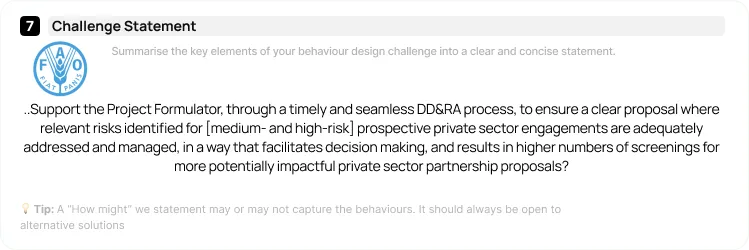
This exercise is typically completed in 90 minutes, can be delivered in-person or online, and in workshops of 1-10 product stakeholders and results in a clear and aspirational challenge statement.
Let us show you how it works:
Step 1: Define Measurable Outcomes
Identify the specific measurable outcome that you expect your project to achieve. This outcome should directly benefit your project and contribute to its overall success. Whether it's increased user engagement, higher conversion rates, or improved user satisfaction, clarity in defining a desired outcome is crucial. Prioritise as necessary.
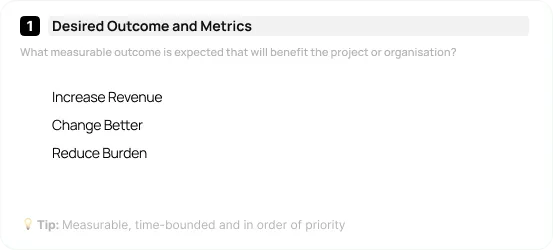
Step 2: User Goals
Define the functional goals that users will accomplish and their emotions while engaging with your digital product or service. Ensure that user goals align with yours by articulating them from a user perspective. This way, alignment will drive meaningful user behaviour while meeting business needs.
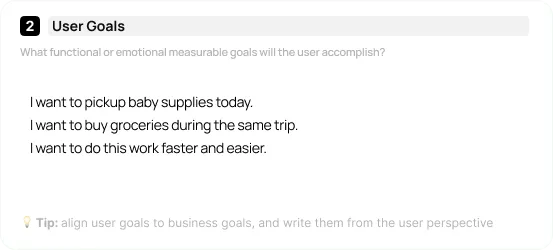
Step 3: Why Does Achieving the Outcome Matter?
Explore how delivering this outcome aligns with your organisation's purpose and values. Connecting the dots between the outcome and your core mission will inspire purposeful product development, a way to Make it Meaningful both for the team assigned to build the product and for your target audience.
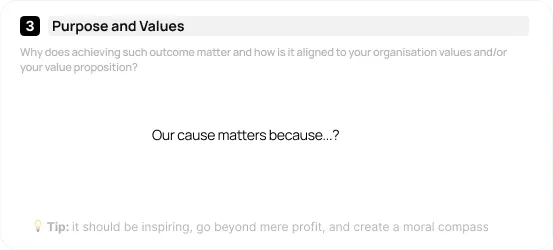
Step 4: Identify the User Persona
Who are you trying to influence and what insights are relevant to frame a strong challenge statement?
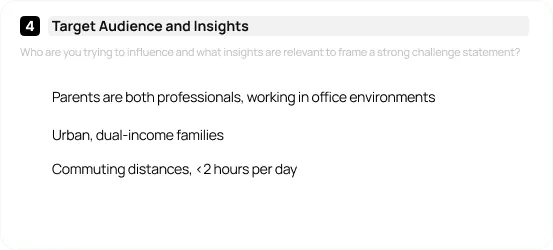
Step 5: Determine the Target Behaviours
Identify the specific behaviours you want to encourage or discourage among your target audience. These behaviours should have a direct impact on achieving desired outcomes defined in step 1. By pinpointing these behaviours, you can tailor your product's design to elicit the desired responses.
💡 Tip: Target behaviours should be specific, measurable and laid out chronologically. Knowing the phase of the user journey behavioural design best practice (check out our most recent blog post on the subject).

At Make it, we take a meticulous approach to defining behaviours. We evaluate them based on several aspects, including; Execution Type, whether they are completion-oriented or performance-oriented; and we consider their Repetition, whether they are one-offs, repeated, or become habitual.
💡Completion-Oriented Behaviours are task-focused and prioritise successful completion of specific actions or tasks. Examples include:
- Logging daily workouts in a fitness app.
- Completing a workout plan within a specified timeframe.
- Tracking steps taken or distance covered during a run.
💡Performance-Oriented Behaviours shift the focus beyond mere completion to achieving a desired level of performance or outcome, as described in our challenge statement above. These behaviours consider the quality, effectiveness, or impact of the task. Examples include:
- Improving personal best in a specific exercise, such as increasing the maximum weight lifted.
- Reducing rest time between sets to enhance workout efficiency.
- Increasing the number of repetitions in a strength exercise to build endurance.
Behaviours can be categorised into three patterns: one-time, repeated (with an end), and habitual. Each pattern represents a distinct frequency and repetition characteristic that influences how interventions are designed and implemented.
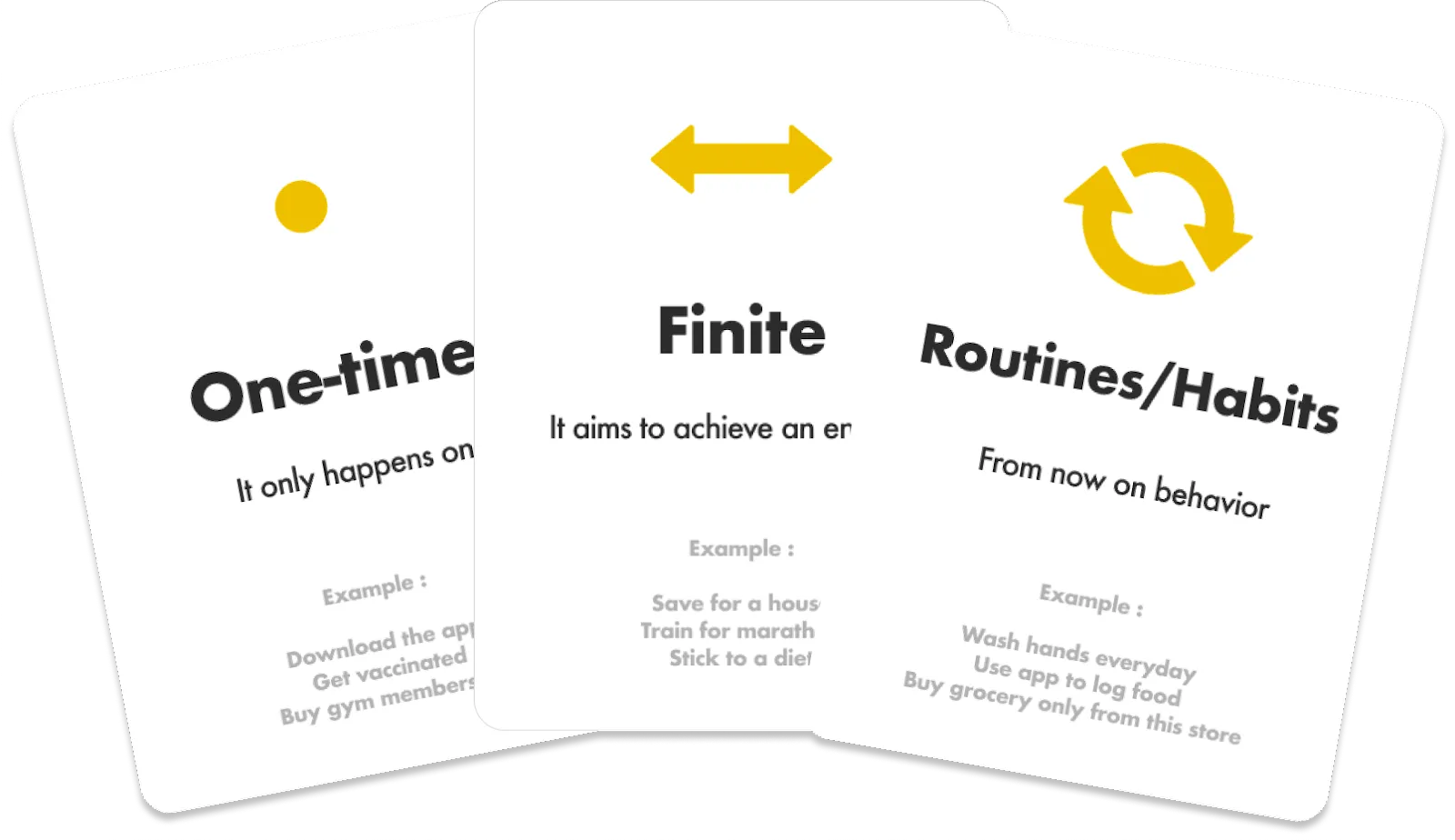
The 3 Core Behavioural Patterns
Let's explore each pattern with some examples:
One-time Behaviour
One-time behaviours are actions that occur as single instances or are not intended to be repeated. These behaviours are typically self-contained and do not have an ongoing or continuous nature. Examples of one-time behaviours include:
- Trying out a new fitness class for the first time.
- Attending a one-off workshop or seminar.
- Participating in a single volunteering event.
Finite-Behaviour
Finite behaviours refer to actions that are performed multiple times within a specific duration or until a particular goal is achieved. These behaviours have a defined endpoint or target. Examples of repeated behaviours with an end include:
- Following a 30-day workout challenge.
- Completing a set number of therapy sessions.
- Saving to buy a car.
Routines/Habitual Behaviours
Routines and Habitual behaviours are actions that are performed regularly over an extended period without a specific endpoint. Examples include:
- Brushing teeth twice a day.
- Practising meditation every morning.
- Engaging in daily physical exercise.
Routines can be intentionally established and modified, whereas habits are more automatic and less consciously controlled.
Understanding the execution type and behavioural patterns is vital for designing effective behavioural interventions. Different patterns require tailored approaches to maximise their impact.
Step 6: Map Touchpoints for Prompting and Providing Feedback
IIdentify key touch points within your product's user journey that can prompt users to perform the desired behaviours. Also, consider the feedback mechanisms you can implement to acknowledge and reinforce positive actions, fostering continued engagement.

Step 7: Summarise with a "How Might We" Statement
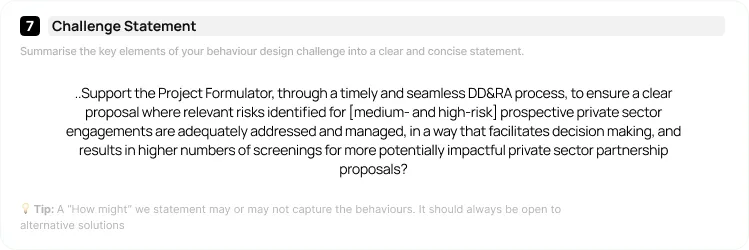
Pull together the insights from the previous steps into a concise and powerful "How might" we statement. This statement should serve as a guiding principle for the development of your digital product, inspiring innovative solutions that drive user behaviour and contribute to your project's success.
By following these seven steps, you and your team will embark on a transformative journey, leveraging behavioural design principles to create exceptional digital products and services that align with your objectives and resonate with your users.
-- Figjam Link to Behavioural Design Strategy Canvas
To aid you with this first challenge, we built a step-by-step guide through this Figma template, ready for you to duplicate into your domain. We encourage you to leave your mark on the board (emoji/your avatar) to let us know you were there, but it’s completely up to you.
Setting up a behavioural challenge statement is the first step of our tried-and-tested behavioural design process. If you wish to learn it all in a fun environment, check out our top rated Masterclass. But join at your own risk, you won’t see people the same way after.







